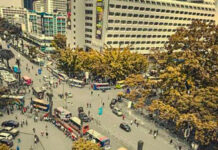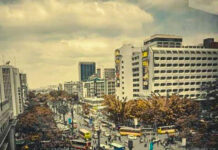
Introduction to Nairobi City
Nairobi, the capital city of Kenya, is a bustling metropolis that serves as the economic and political hub of the country. However, its journey from a small settlement to a thriving city is a tale of resilience, determination, and transformation. In this article, we will explore the captivating story behind the birth of Nairobi city, from its early beginnings to its present-day grandeur.
The Early Settlement of Nairobi
Long before Nairobi became a city, it was a humble swampy area inhabited by the Maasai people. The Maasai recognized the strategic location of the land, as it provided an ideal spot for watering their livestock during their migration. The area’s natural resources and abundant wildlife attracted explorers and adventurers who ventured into East Africa. One such explorer was the British railway engineer, Sir George Whitehouse, who arrived in the area in the late 19th century.
The Birth of Nairobi City
The birth of Nairobi as a city can be attributed to the construction of the Mombasa-Uganda Railway, also known as the Lunatic Express, in the 1890s. The railway project aimed to connect the coastal city of Mombasa with the interior of East Africa. In 1899, Nairobi was established as a railway camp along the route. The camp provided essential facilities for the railway workers, including a hospital, a police station, and a supply depot.
The Declaration of Nairobi City
As the railway camp grew in size and importance, the need for a formal declaration of its status became evident. In 1907, Nairobi was officially declared a township by the British colonial government. This declaration marked a significant milestone in the city’s history, as it granted Nairobi a measure of self-governance and administrative authority.
The Chartering of Nairobi City
The chartering of Nairobi as a city came in 1950 when it was granted municipal status. This elevated Nairobi’s position from a township to a fully-fledged city with its own elected council. The charter allowed for greater autonomy in decision-making and paved the way for the city’s rapid development and modernization.
Nairobi City’s Growth and Development
In the decades that followed its declaration and chartering, Nairobi experienced exponential growth and development. The city became the center of commerce, trade, and administration in Kenya. Its strategic location, coupled with its well-established infrastructure and vibrant business environment, attracted both local and international investors. Skyscrapers, shopping malls, and residential buildings began to dot the city’s skyline, transforming Nairobi into a modern metropolis.
Nairobi City Today
Today, Nairobi stands as a testament to the vision and hard work of its early settlers and urban planners. The city continues to grow at a rapid pace, with a population that surpasses four million people. Nairobi is not only a thriving economic center but also a melting pot of cultures, offering a diverse range of culinary delights, art galleries, and vibrant nightlife.
Nairobi City Today
Today, Nairobi stands as a testament to the vision and hard work of its early settlers and urban planners. The city continues to grow at a rapid pace, with a population that surpasses four million people. Nairobi is not only a thriving economic center but also a melting pot of cultures, offering a diverse range of culinary delights, art galleries, and vibrant nightlife.
Historical Landmarks in Nairobi City
Nairobi boasts several historical landmarks that serve as reminders of its rich past. The Nairobi Railway Museum, located near the city center, showcases the history of the Mombasa-Uganda Railway and its impact on the development of Nairobi. The Karen Blixen Museum, situated in the former home of the renowned Danish author, offers a glimpse into the colonial era and the life of Karen Blixen. Another notable landmark is the Nairobi National Museum, which houses a fascinating collection of artifacts and exhibits that depict Kenya’s cultural heritage.
Exploring Nairobi City’s Culture and Heritage
Nairobi’s cultural scene is vibrant and diverse, reflecting the various ethnic communities that call the city home. The city has numerous art galleries, theaters, and cultural centers, where visitors can immerse themselves in the local arts and traditions. The Maasai Market, held in various locations across the city, offers a unique shopping experience, where visitors can purchase traditional crafts, clothing, and souvenirs.
Conclusion
The birth of Nairobi city is a captivating tale of transformation and growth. From its humble beginnings as a swampy settlement to its present-day status as a thriving metropolis, Nairobi has come a long way. The city’s rich history, cultural heritage, and rapid development make it a fascinating destination for both locals and tourists alike. As Nairobi continues to evolve, it remains a symbol of progress and opportunity, a testament to the resilience and determination of its people.








